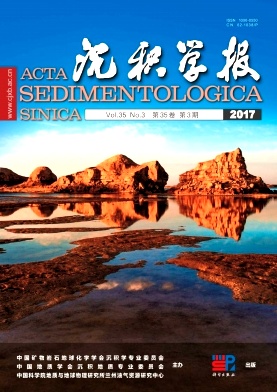Ecological and Environmental Interpretation of the Trace Fossil Rhizocorallium Based on Pyrite Framboids of Upper Devonian in Southwest of Henan Province
doi: 10.14027/j.cnki.cjxb.2017.03.006
- Received Date: 2016-03-31
- Rev Recd Date: 2016-07-07
- Publish Date: 2017-06-10
-
Key words:
- trace fossils /
- Rhizocorallium /
- Late Devonian /
- pyrite framboids /
- micro-sedimentary facies
Abstract: The trace fossils Rhizocorallium is abundant in the Upper Devonian Wangguangou Formation in Xichuan, southwestern Henan Province. It consists of U-shape spreite burrows and more or less parallel or slight incline to the bedding of marling limestone. Scanning electron microscope images show that abundant pyrite and iron framboids (iron framboids were mostly oxygenated from pyrite framboids) were found within the Rhizocorallium burrow, including (pyritohedral, octahedron, cube and nearly spherical and irregular shape). No similar framboids were observed outside Rhizocorallium except a few single pyrite crystals. Most of iron framboids were sheathed within the Rhizocorallium burrow. At the same time, the diameter of the submicron crystals in the marginal tube (0.672~1.603 μm, the average diameter of is 1.063 μm ) was bigger than that in the spreite (0.376~0.877 μm, the average diameter is 0.5 μm ). Therefore, it is likely that sulphate-reducing bacteria colonized the Rhizocorallium spreite and marginal tube within a dysoxic environment. The results indicated that Rhizocorallium would represent a burrow for multifunctional purpose, where the trace maker has utilized available conditions (such as substrate type, food supply, dysoxic to oxic environment) for cultivation of microbes.s
| Citation: | ZHAO Zhao, ZHANG LiJun. Ecological and Environmental Interpretation of the Trace Fossil Rhizocorallium Based on Pyrite Framboids of Upper Devonian in Southwest of Henan Province[J]. Acta Sedimentologica Sinica, 2017, 35(3): 480-488. doi: 10.14027/j.cnki.cjxb.2017.03.006 |






 DownLoad:
DownLoad: